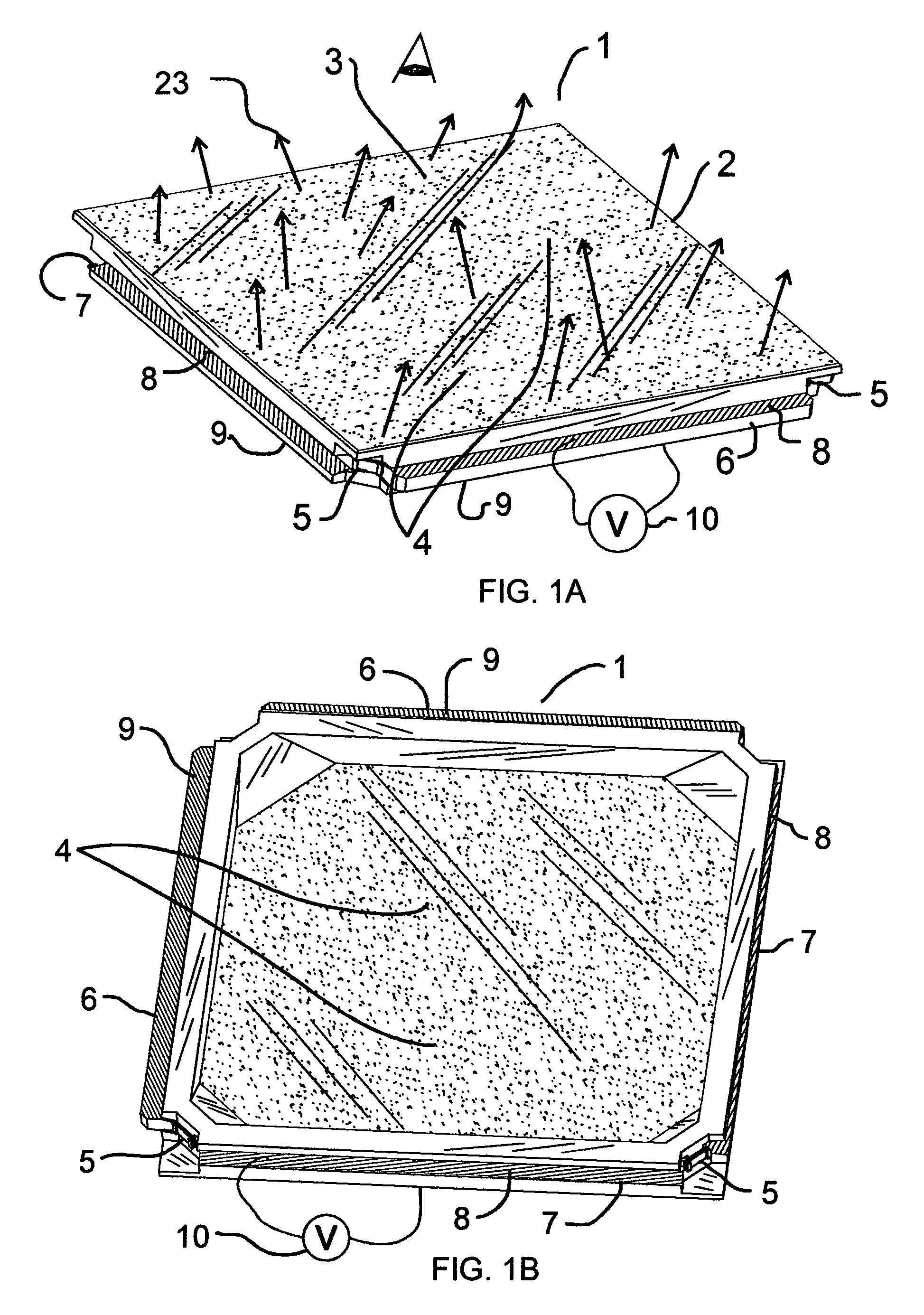Lightguide tile modules and modular lighting system
a technology of modular lighting and lightguide tiles, applied in lighting and heating apparatus, lighting support devices, instruments, etc., can solve the problems of large bulky assemblies, inefficiency, and large requirements of bulky assemblies
- Summary
- Abstract
- Description
- Claims
- Application Information
AI Technical Summary
Benefits of technology
Problems solved by technology
Method used
Image
Examples
Embodiment Construction
[0024] In an embodiment of Method A, and FIG. 1, the modular lightguide tile (1) is substantially edge lighted with LEDs (5). In this example, LEDs are located in the 4 corners and the LED light (23) output directed toward the center of the tile. The lightguide substrate (2) is made of a light transmitting material such as acrylic, polycarbonate or glass, functioning primarily as a light guide, or light-pipe, via transmission and total internal reflection. The primary viewing side (3) of each tile contains light-diffusing (4) means on one or more faces of the lightguide substrate (2), which reflects, refracts and / or diffuses the light (23) toward the viewing side of the tile. Each tile is provided electrical connection means, such that tiles may be attached to adjacent tiles, and the LEDs powered from a single (or multiple) power sources (10) and forming lighted arrays. In the example in FIGS. 1A and 1B tongues (6) along two adjacent sides and grooves (7) along two adjacent sides ar...
PUM
 Login to View More
Login to View More Abstract
Description
Claims
Application Information
 Login to View More
Login to View More - R&D
- Intellectual Property
- Life Sciences
- Materials
- Tech Scout
- Unparalleled Data Quality
- Higher Quality Content
- 60% Fewer Hallucinations
Browse by: Latest US Patents, China's latest patents, Technical Efficacy Thesaurus, Application Domain, Technology Topic, Popular Technical Reports.
© 2025 PatSnap. All rights reserved.Legal|Privacy policy|Modern Slavery Act Transparency Statement|Sitemap|About US| Contact US: help@patsnap.com



